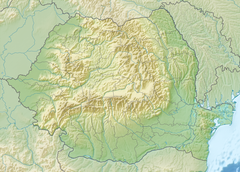남부 스코틀랜드인
Southern Scots이 기사 또는 섹션은 번역 언어에 대해 {{lang}, {{transl}}, 그리고 {{ternal}을 사용하여 영어 이외의 내용의 언어를 명시해야 한다.적절한 ISO 639 코드를 포함한 음성 기록용 IPA}. 위키피디아의 다국어 지원 템플릿도 사용될 수 있다.를 알아보세요. (2020년 6월 |
| 스코틀랜드어 |
|---|
| 역사 |
| 방언 |
Southern Scots는 스코틀랜드 보더스의 중부와 동부의 Dumfriessire, Roxbergshire 및 Selkirshire에서 사용되는 사투리(또는 방언 그룹)로,[1][2] 에든버러처럼 SE Central Scots 방언 영역의 일부인 Berwickshire와 Peeblesshire를 주목할 만한 예외로 한다.[3][4] 테리버스 예테리 오딘이라는 구절에서 예를 들면 하윅에 있는 테리(Terius ye teri odin)[citation needed]와 같이, 보더 스콧(Border Scots), 보더 스콧어(Border scots), 보더 스콧어(Border scots) 또는 사우스 스콧(Scots) 지역 내의 마을 이름으로도 알려져 있다. 사우스 스코트 사투리가 사용되는 도시로는 얼스턴, 갈라시엘스(갈라 또는 갈래), 호익, 제드버그(제타르트), 켈소(켈사), 랭홀름, 라커비, 뉴캐슬턴(캅쇼 또는 콥샤홀름), 세인트 보스웰스(보셀스), 셀커크 등이 있다.
음운론
Southern Scots 음운론은 일반적으로 인접한 Central Scots 변종과 유사하지만, 일부 모음 현실은 현저하게 다를 수 있다.
- ch는 등모음 뒤에 /xw/를 실현할 수 있다.[5] 예를 들어 lauch(웃음)와 sauch(소우치)가 있다. 성단 오치는 종종 /ɔux/,[5] 예를 들어 bocht (boucht), coch (couch), docht (couch), focht (focht), socht (toucht) 그리고 trouch (trough)는 방언적 글에서 자주 쓰여진다. 프런트 모음 후에 실현은 /s/이며, 때때로 그 전에 yod-glide가 있는 경우도 있다.[5]
- ld와 nd는 보통 이스트 덤프리에셔와 록스버그셔에서 /l/와 /n/에 의존한다.[6]
- a (17절)은 종종 /csv/[7]이다. awa(멀리), twa(2), wha(누구)의 마지막 a(vowel 12), who(누구)는 종종 실현되고 /eː/, 종종 사투리 글자로 awae, twae, whae를 쓴다.
- aw와 au(vowel 12)는 central Scots 방언에서와 같이 /ː aw/ 또는 /ːː/보다는 /ːː/를 실현할 수 있다(예: aw (all), could (cold), braw (handsome), faw (fall) 및 snaw (now)와 같이 사투리 글로 자주 a(a)를 사용하여 쓸 수 있다.
- 몇몇 지역에서 또는 a(자음)e(모음 4또는 8)것이 아니(ː)/, 예를 들어 baith(둘 다), 브레이드( 넓은), 케이크, claes(옷), 포도( 더듬다),kail(서양 평지),을 낳았다.(하중),laif(빵), 만들어진raip(밧줄),saip(비누)종종 쓰여진 beeath, 방언 wr에 breead, keeak, cleeaz,greeap, keeal, leead, leeaf, meead, reeap, seeap /ɪə[8]실현될 수 있을테지요.iting. 모음이 처음에 발생할 때 실현은 종종 /jɪ/ 예를 들어 acre, aik (oak), aits, (oats), 에일, ane (one), ance (한 번) 사투리 글에서 종종 yicker, yits, yill, 음, yince로 쓰여진다. 비슷하게 /h/ 다음에 hame (home)과 헤어스(hoarse)는 사투리 글로 hyil, hyim, hyirs(c)h를 자주 썼다. 실현 /provalization/은 spae(예측)와 같은 최종 ae에 대해서도 발생할 수 있다.
- 일부 품종에서 e(vowel 16)는 /vmx/가 아니라 /vmx/[7]가 될 수 있다. 예를 들어, 침대, het(난방), et(게이트) 등이 있다.
- final ee (vowel 11)는 보통 /ei/,[7] 예를 들어 dree(내부), flie(날아라), lee(날아라), lee(거짓말, 섬유), thigh(거짓말)와 나무, 종종 drei 또는 drey, fley, lie 또는 se 또는 these, trey 또는 trey를 방언 글로 실현한다.
- eu( /k/ 및 /x/ ui 참조)는 종종 실현/실현되는 경우가 많은데,[8] 예를 들어 beuk(책), eneuch(장), ceuk(조리), 백혈병(외모), teuk(외모) 등이 있다.
- ou, 또한 최종이 실현될 때 oo (vowel)/,[8] 예를 들어 brow (브라우), cou (소), dou (dove), hou (how), hou (how), nou (how), fou (full), pou ( sou), sou ( all), allou (허용), throug (th), 그리고 당신은 사투리 (e)로 자주 표현된다.
- 오우,[9] 빚진 (루트 파이널) (vowel13)은 보우 (보우), 하우 (hollow), 노우 (knoll), 카우프 (overturn), 요우 (ewe) 등이 아닌 //u/일 수 있다.[10]
- ui(vowel 7)는 종종 실현되지만,[8] Central Scots에서와 같은 비원형 실현은 현재 널리 퍼져 있다(예: abuin (위쪽), cuit (ankle), guid (good). [eː]에 대한 언라운딩은 이제 아대(ado), 부어드(buird), 대(do), 플루어(fluir), 푸어드(ford), 셰이(shoe), 태(to~to)에서 흔히 볼 수 있다.
문법
현재 분사 및 발생은 분화 /nn/ 및 /in/,[5] 예를 들어, 그는 aye aye sutoran aboot. 그리고 그는 오롯테린을 좋아한다.
문학
샘플 텍스트
From Mang Howes an Knowes by Eliot Cowan Smith (1891–1917)
그러나 하루에 13개의 브래지어가 언코시츠를 보았다. Thonder는 Moniment A jalooed ti를 Liliard's Edge Memorial이라 불렀고, 그래서 A는 블루디 Ancrum Muir에 있었다. 내 캐니 다핀 소 릴은 겁쟁이 페히트를, 두글라스 더글라스 더글라스 더글라스 더글라스 더글라스 더글라스 더글라스 더글라스 더글라스 더글라스 더글라스 더글라스 더글라스 더글라스 더글라스 더글라스 더글라스 더글래스 더글래스 더글래스 더글래스 더글래스 더글래스는 하루 톱으로 득점을 날리며,
Threh the mids o thir verra busses wad stert the huirn oo read aboot in oor bulks: ilk sheuch an heidie-hole i thir verra rigs was den for fairce sodgers in fechtin-graith-Scots an Ingleesh in a fraineeshin, fidgin mad-keen ti teer the harrigals oot o other; ilk lirk o thir knowes wad heide the gear o war. Hei'd little need be hen-herteet that hed ti beer the ramstam onfaa threh whan the slogan waekent the waller an sterteet the fray i the gray-daylicht,-eendon throwe aa the grewsome mowlie-; whan billies fell seide-be- seide till the brae-face was traisselt an the gress ran reid wui bluid; whan naigs an troopers-the deed- ruckle glutherin i-ther we이즈워 카우페는 일카 세이케에, 더킨이 합을 노를 저을 때까지 채찍질을 하고, 하이힐은 보리를 삼켰다. 우르는 사우스론 네버 쿠드나가 부드러운 아바 i thes days: 그들은 항상 나테린과 싸운다. 안식처 veshyis feechen as it, tui! 민중은 twae produed a twae produed a twae prothers o Mairches o a canna grei an is aye cuissen-oot. 보더러스 랑 syne gehsels a awfih liife. 그들의 것은 개똥벌레였다!
엉덩이-발-발-발-발-발-발-발-발-발-발-발-발-발-발-발-발-발-발-발-발-발-발-발-발-발-발-발-발-발-발-발-발-발-발-발톱 This eez the saicant sic column, A've haar'tell; for, yeh gowsty nicht (wui a wund fit ti blaw doors oot wundihs) a turbleent woare as the ordnar dang doon the firsst Peinelheuch moniment (the whulk, A unk, maun heh been buggen keinda jingle-jointeet, or maim heh cowblt on ov a gey coaggly foond ; ony o the ways, it geh a steiter, an yownt-owre it tirlt!) 작은 국경 사람들은 그렇게 쉽게 베팅하지 않는다; 그들은 단조로운 것을 주물러서 싸움을 하는 것이 더 낫다. 지금은 보더랜드에 있는 아바디 스트라바이가 리라이더즈드 켄 피넬허치를 타고 있다.
지금쯤이면 이즈 앞에 길이 나부끼고 있을 거야 Ay! doon ti maaav-grund o Teviot-dale a lilteet a sing a whuited a'd gan wuth, a'd gane wuth, a lauld-as a wuddie---bondin's airms sugiein low threh ma. A은(는) 우여곡절이었다! A는 naeder ti haud도 ti binnd도 아니었어! 만약 온바디가 이즈를 헤딩한다면, 그는 보우덴을 위해 준비가 되어있었을거야!!
참조
- ^ "SND Introduction". Dsl.ac.uk. Archived from the original on 2012-03-21. Retrieved 2013-02-09.
- ^ "Wir Ain Leed dialect map".
- ^ "Snd Maps". Dsl.ac.uk. Archived from the original on 2012-05-24. Retrieved 2013-02-09.
- ^ "Snd Introduction". Dsl.ac.uk. Archived from the original on 2012-06-12. Retrieved 2013-02-09.
- ^ a b c d "SND Introduction – Dialect Districts. p.xxxi". Dsl.ac.uk. Archived from the original on 2012-01-21. Retrieved 2009-05-21.
- ^ "Introduction – Dialect Districts". Dsl.ac.uk. Archived from the original on 2012-01-21. Retrieved 2013-02-09.
- ^ a b c "SND Introduction – Dialect Districts. p.xxx". Dsl.ac.uk. Archived from the original on 2014-08-19. Retrieved 2009-05-21.
- ^ a b c d "SND Introduction – Dialect Districts. p.xxix". Dsl.ac.uk. Retrieved 2009-05-21.
- ^ "SND:O 3 (4)(ii)". Dsl.ac.uk. Retrieved 2013-02-09.
- ^ "SND Introduction – Dialect Districts". Dsl.ac.uk. Archived from the original on 2014-08-19. Retrieved 2013-02-09.


